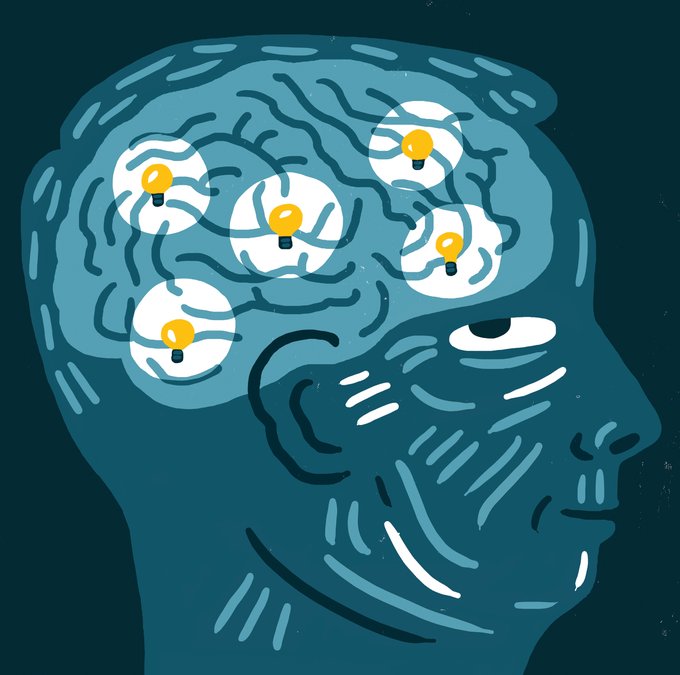braininjuryのTwitterイラスト検索結果。 16 件
When you look & feel like this, what are your go to #selfcare activities?
As a community, we are better together as we share information, ideas, & experience.
#brainstormforbraininjury #braininjury #invisibledisability #selfcaresunday #sundayselfcare #sunday #sundayvibes
At #headwayblackcountry we feel it is important to spread #awareness of all different types of #braininjury. We are once again focusing on #strokes but this time we are making people aware of the different kinds of stroke.
New editorial illustration for Finansforbundet (DK) 'Brain Optimization' AD: Lone Halse Blinkenberg. https://t.co/62psHr5Rhj #illustration #brainhealth #braintraining #brainhealthmatters #braininjurysurvivor #brainscience #mentalhealth #mentalhealthawareness #finansforbundet
WHAT IS #APHASIA? 🧠
Curious about this invisible disorder? Watch our original video series to understand this condition after #braininjury or #stroke. 🌟 Follow @AphasiaSG YouTube Channel for more videos on brain injury and aphasia.
#speechtherapy https://t.co/ZtIwF0pFUA
A HUGE thank you to @BBK_AdultBrain for organising the 'Fun for Funds' Quiz 🎉 Along with 130 quizzers, they raised an amazing £2,864.66 for #braininjury survivors!
A special shout out to @TG_Chambers & @9GoughChambers for donating their prize money to the final tally 💫
Anique McIntosh is the artist behind the illustration featured in this article!
Read the full article in Issue 9 of #rehabINK:
https://t.co/0EHPACUqTO
#RehabilitationScience #concussion #braininjury
(2/2)
My family unit are utilising our isolation toolkit after my son’s injury a few years ago; note every little win, random acts of kindness, self-compassion (we all struggle), comedy, music + prioritising wellbeing. #mentalhealth #wednesdaymorning #braininjury #draw Work emerging..
🚲 Calling all #HeadwayHeroes !
Take on a new challenge this summer and cycle 50 or 100k through the city at night while raising vital funds for #braininjury survivors
Email support-us@headwayeastlondon.org to find out more or visit https://t.co/DS1fJcJGsw to sign up!
“Unafraid” there is so much symbolism in this abstract for me - but central to this one is the lion (Judah). Spiritual and meditative amid the chaos. #abstract #lionofjudah #courage #spiritual #thereddotartist #dianadeavila #acquiredsavantsyndrome #TBI #MS #braininjury
Below is another clue for our upcoming fundraiser in May!!!! Any ideas?!!! #fundraiser #teamchallenge #braininjuryweek #wantotakepart #riverlagan #TuesdayMotivation #sunnydays
Working with #braininjury at home really does spill over into my artwork. Dendritic patterns all over the place! #mixedmedia #generativeart #sciart #neuroscience #drawing #Mindfulness #MentalHealthAtWork #fineart
Why should we consider #neurons as multiphysics objects and not just firing machines? #Parkinsons #brain #braininjury Here you can read the answer by Oxford scientist Antoine Jerusalem: https://t.co/a4QSsykN0n #ERC @ERC_Research
Whiplash and contrecoup injury; a quick animation to show how the brain gets thrown around in the skull in sudden deceleration head injury. My YouTube channel: https://t.co/XdL0VISu38 #FOAMed #whiplash #contrecoup #braininjury #headinjury #scicomm
. Today. Inspired by Iulia Carchelon. #100gig #braininjurythriver #IWillNeverGiveUp #JackIsSleeping #DreamBig
Motorcycle helmets reduce the risk of brain injury by 69% and reduce the risk of death by 42%. #Helmet #braininjury #motorcycles #RoadSafety































